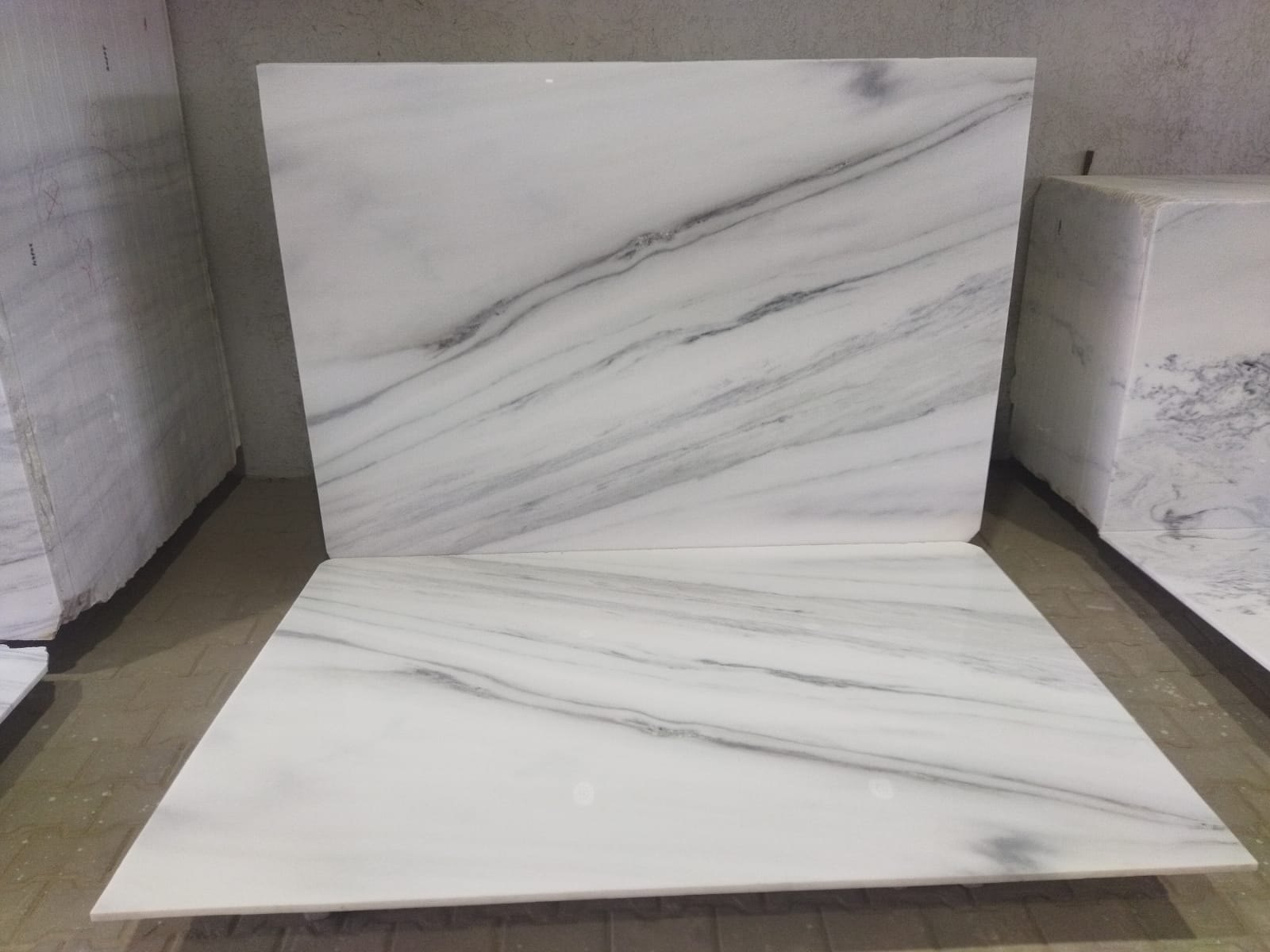Marble is a metamorphic rock composed primarily of calcite or dolomite crystals, often with other minerals such as graphite. Or pyrite interspersed throughout. It is renowned for its stunning appearance characterized by intricate veining and a lustrous surface. Used for centuries in art, architecture, and sculpture, marble continues to captivate with its timeless beauty and versatility.
Formation and Geographical Origins
Marble forms through the metamorphism of limestone, a sedimentary rock primarily composed of calcium carbonate. Under intense heat and pressure within the Earth’s crust, limestone undergoes recrystallization, transforming into the dense, crystalline structure characteristic of marble.
The geographical origins of marble are diverse, with deposits found on every continent. Some regions are renowned for their exceptional marble quality and abundance. Italy, particularly the Carrara region, is famed for its white Carrara marble, prized for its purity, and used in iconic sculptures such as Michelangelo’s David. Greece, Turkey, Spain, and India are also significant producers of high-quality marble.
Types
Marble comes in a vast array of colors, patterns, and textures, each influenced by the specific mineral composition and geological conditions of its formation. Here are some of the most notable types of marble:
1. Carrara Marble:
Originating from the Carrara region of Italy, this pristine white marble features subtle gray veining, making it a classic choice for sculptures and architectural elements.
2. Calacatta Marble:
Also hailing from Italy, Calacatta marble is distinguished by its bold dramatic veining, which ranges from gray to gold in color. Highly sought after for luxury countertops and flooring.
3. Statuario Marble:
Another Italian marble, Statuario is prized for its pure white background and striking gray veins. It exudes elegance and is often used in high-end interior design projects.
4. Emperador Marble:
This rich brown marble, quarried primarily in Spain is characterized by its warm tones and intricate veining. It adds a touch of sophistication to any space.
5. Crema Marfil Marble:
Quarried in Spain, Crema Marfil marble showcases a creamy beige background with subtle veining, lending a soft, luxurious ambiance to interiors.
6. Nero Marquina Marble:
Originating from Spain, Nero Marquina marble features a striking black background adorned with contrasting white veins, creating a bold, contemporary look.
7. Verde Guatemala Marble:
This vibrant green marble, sourced from Guatemala, boasts a unique color palette and intricate veining, making it a standout choice for accent pieces and statement walls.
Frequently Asked Questions (FAQs)
1. Is marble suitable for kitchen countertops?
Yes, marble can be used for kitchen countertops, but it requires proper care and maintenance. Marble is susceptible to staining and etching from acidic substances like lemon juice and vinegar, so it’s essential to seal the surface regularly and clean up spills promptly.
2. Can marble be used in outdoor applications?
While marble is often used in outdoor settings such as patios and pool surrounds, it is not as durable as some other natural stones like granite or quartzite. Exposure to the elements can cause the marble to weather and degrade over time, so it’s essential to choose a high-quality, weather-resistant variety and seal it properly.
3. How do you clean and maintain marble surfaces?
To clean marble surfaces, use a mild detergent or stone cleaner and a soft cloth or sponge. Avoid abrasive cleaners and scrubbing pads, as they can scratch the surface. Wipe up spills immediately to prevent staining, and regularly seal the surface to protect against etching and moisture penetration.
4. Is marble suitable for bathroom applications?
Marbles are a popular choice for bathroom countertops, floors, and shower surrounds due to its elegant appearance and water resistance. However, it’s essential to use honed or matte finish marbles for flooring to prevent slipping when wet.
5. Can marble be repaired if it gets damaged?
Minor scratches and etches on marble surfaces can often be repaired using specialized polishing compounds and techniques. However, more severe damage such as deep scratches or chips may require professional restoration to restore the surface to its original condition.
Conclusion :
Marbles is a timeless natural stone prized for its beauty, durability, and versatility. From classic white Carrara to exotic Verde Guatemala, the diverse array of marbles types offers endless possibilities for enhancing interior and exterior spaces with elegance and sophistication. With proper care and maintenance, marbles surfaces can withstand the test of time, making them a valuable investment for any design project.




